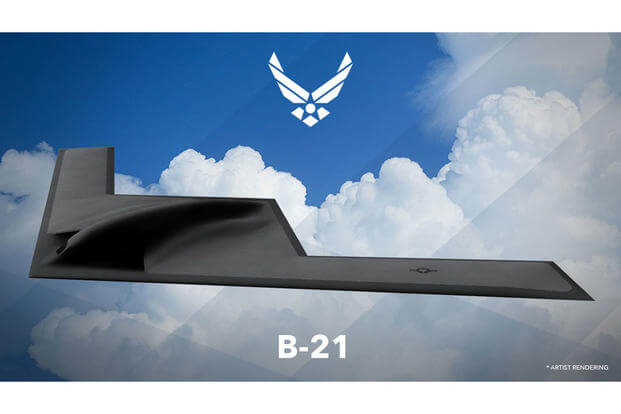President Donald Trump's proposed fiscal 2020 budget has yet to be released, but analysts say the Defense Department can expect it to support the National Defense Strategy (NDS) and possibly to include funding for a border wall.
Regardless of the amount the DoD receives, the services should expect a budget proposal that supports initiatives to strengthen the United States' posture against potential adversaries such as China and Russia, according to defense experts speaking at the Center for Strategic and International Studies in Washington, D.C., on Thursday.
Last year, the DoD fiscal 2019 budget request projected that the 2020 defense budget would be $733 billion. In October, Trump said he would cut that to $700 billion, but he has since expressed a course reversal and may increase it to as much as $750 billion.
Mark Cancian, a retired Marine Corps colonel who now serves as senior adviser for international security at CSIS, said the figure is rumored to be closer to $745 billion. He added that any amount over $733 billion could be set aside for overseas contingency operations or even a border barrier.
Related: Space Force, F-15X, Light Attack: What Will the Air Force Seek in Latest Budget?
But, he added, given ongoing negotiations between the president and Congress over border security, he doubts a proposal that includes border wall funding would get through the legislative process.
"It would only have applicability if the president declared a national emergency," Cancian said.
Todd Harrison, director of defense budget analysis and a CSIS senior fellow, said if border funding does make it into the defense budget, it would be marked for the Department of Homeland Security and should be disregarded in the overall DoD budget discussion.
"It would be a budget gimmick," he added.
The real budget question is whether it will mark a shift to investing in technologies and platforms designed to thwart potential nation-state adversaries such as China and Russia, said Andrew Hunter, director of the defense-industrial initiatives group and senior fellow of the international security program at CSIS.
If it does, the Air Force is well-postured because its top priorities, including the F-35 fighter, KC-46 tanker, B-21 bomber and nuclear modernization, are "already geared toward peer competition," Hunter said.
The main question for the Air Force, then, would be the pace of funding the "next tier of priorities," such as the T-X trainer, predictive battlespace awareness technology and light attack aircraft.
Both the Navy and Marine Corps are entrenched in several large acquisition programs that focus on a variety of missions -- some geared toward fighting a large adversary and others designed for small-scale wars. These programs can be tweaked with new systems to ensure they meet NDS missions, Hunter said.
The Army would be the service most affected by a budget geared toward NDS priorities and would likely see a "dramatic reworking of its programs," according to Hunter.
The service's "current production lines are not optimized to deliver the capabilities required for peer competition," he said.
"The fiscal 2020 budget request will likely ... fill in key areas of deficit" in the Army, Hunter said, including "air and missile defense and long-range fires, while the service begins to transition to next-generation capabilities such as future vertical lift."
Another unknown in the president's budget proposal is the Space Force. According to Harrison, much of how a space command will be structured won't be addressed in the budget proposal, but the document will reveal the extent to which a space force will be funded and whether it will be a stand-alone service.
"The big unresolved question is the scope of it. Is this going to be Air Force Space Command Elevated or is it going to be more broad? Will they put it underneath Air Force? Or will it be a separate and independent service as the president said last spring?" Harrison asked.
"I don't think we are going to know until that is signed off by the president and issued. But it does look like they are leaning more toward keeping it in the Department of the Air Force," he said.
What is known is that Trump's fiscal 2020 budget will be late. The administration has already announced a delay. Cancian said it could be as much as five weeks late, which could mean that by October, Congress is again considering continuing resolutions to keep the government open.
And regardless of the size of the budget, Pentagon leaders will always need to make choices, the analysts said.
"Even with a $700 billion budget, you can fully implement the NDS. You would have to make trade-offs, make the hard choices, make some people mad," Harrison said. "With a $750 billion budget, you could completely fail to implement the strategy by investing in the wrong things. [Either way], to do it within the range of money we are talking about, they are going to have to make trade-offs."
-- Patricia Kime can be reached at Patricia.Kime@military.com. Follow her on Twitter @patriciakime.










